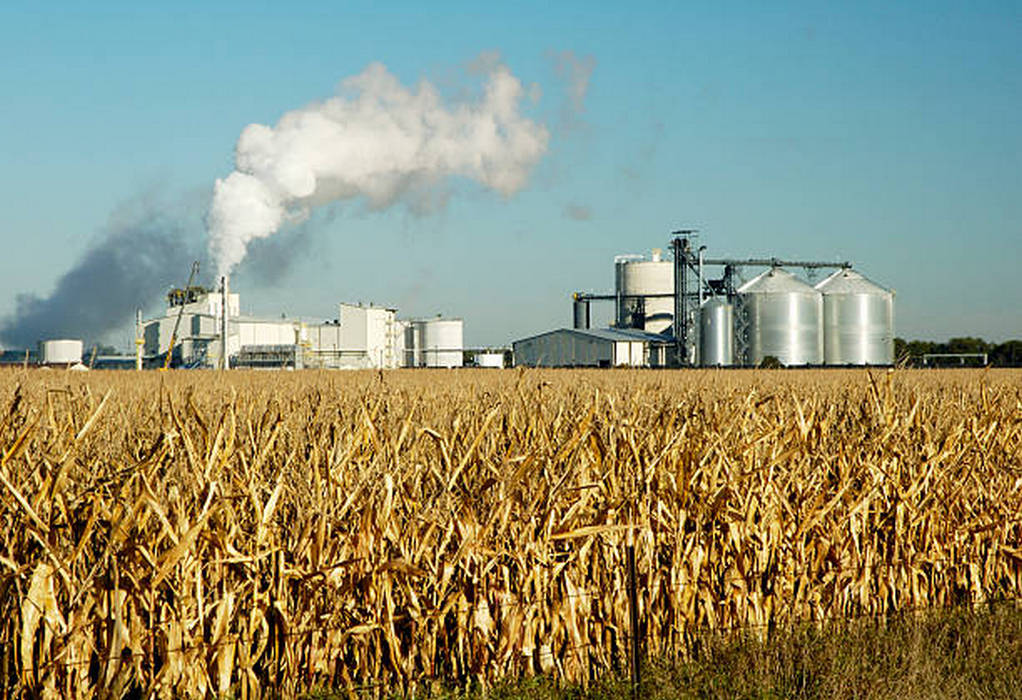Sugar’s strong price premium over ethanol, volatility in the Brazilian real/US dollar exchange rate, and unknown changes in the Petrobras ex-refinery gasoline price will remain key drivers for Center-South ethanol prices in 2022.
Sugar premium over ethanol
“Although the 2022-23 crop should witness a slightly higher sugar mix at 46.2 per cent compared to 45.2 per cent for the 2021-22 crop, we anticipate more sucrose will be diverted to ethanol production for the first few months of the crop cycle until existing ethanol stocks reach a more comfortable level,” according to a report from S&P Global Platts Analytics. “Afterwards, crushing will be primarily focused on sugar production because our forward-looking guidance is pointing toward a market environment where sugar production will be paying a premium over ethanol production.”
NY11 front month sugar futures provided an average 1.36 cent/lb premium to Platts assessed hydrous ethanol ex-mill Ribeirao Preto converted into raw sugar equivalent during 2021.
When Center-South mills maximize their sugar production over ethanol production, a monthly average around 1.7 billion-2 billion liters of ethanol will be produced. On the other hand, if mills maximize their ethanol production, a monthly average around 2.5 billion-3 billion liters of ethanol will be produced.
Given current monthly ethanol demand of around 1.9 billion-2.4 billion liters, this ability to add or subtract around 1 billion liters per month to the supply of ethanol is a huge factor in the price discovery mechanism for ethanol prices throughout the year.
Brazilian mills, which are flex mills, have the unique ability to make minute adjustments in the ratio of their ethanol and sugar production based on which product is paying the highest market premium. These quick adjustments implemented by hundreds of flex mills situated in the Center-South can increase or decrease the potential supply of ethanol in the billions of liters and affect the future sugar supply in the millions of metric tons.
Brazil real/US dollar exchange rate volatility
Volatility in the exchange rate between the Brazilian real and the US dollar will continue to drive Brazilian ethanol mills’ decision making in 2022 to prioritize sugar or ethanol production.
“An appreciation of the Brazilian real closer to 5.00/$1 will swing the premium to favor ethanol production by approximately 140 points over sugar production assuming current sugar and ethanol prices remain relatively stable,” a Sao Paulo-based trader said. “On the other hand, a depreciation in the Brazilian real closer to 6.00/$1 will swing the premium to favor sugar production by approximately 190 points.”
The Brazilian real against the US dollar exchange rate will also decide the volumes of ethanol imported into Brazil from abroad and ethanol volumes exported from Brazil due to arbitrages opening and closing in international ethanol markets.
The Brazilian real is expected to be highly volatile in 2022 as it was in 2021, testing record-low exchange rate levels, which solidified the sugar-production premium over ethanol production and closed the import arbitrage for ethanol by a wide margin.
The most recent price data of the Brazilian real/US dollar exchange rate has a current 100-day historic volatility of 14.56 per cent compared to the US Dollar Index having a 100-day historic volatility of 4.83 per cent.
An 14.56 per cent 100-day historical standard deviation points to the probability that the Brazilian real within the next 100 days could potentially experience a 14.56% price move, either an appreciation or depreciation against the US dollar. This would mean a real-to-dollar exchange rate potential trading band of Real 6.50/$1 to Real 4.85/$1 in the next 100 days.
Petrobras ex-refinery gasoline price movements
Current Petrobras CEO and ex-minister of defense Joaquim Silva e Luna has decreased the number of Petrobras ex-refinery gasoline and diesel price changes compared to his predecessor, Roberto Castello.
Roberto Castello was removed by President jair Bolsonaro in February 2021 over multiple diesel and gasoline price increases, which increased fears of a truckers strike at the time, and ultimately would not be expected to bode well for Balsonaro’s political ambitions.
Petrobras has made 16 ex-refinery gasoline price changes during 2021, much less than the 45 ex-refinery gasoline price changes during 2020, all of which have a major effect on ethanol prices and this trend is expected to continue into 2021.
Market participants anticipate the pace of ex-refinery gasoline price changes instituted by Petrobras in 2022 will be in line with 2021 as long as Joaquim Silva e Luna remains president of Petrobras.
Petrobras utilizes a fuel-pricing policy, which include international energy and foreign exchange components, to ensure Brazilian domestic prices are in line with international markets.
Market participants use Petrobras ex-refinery gasoline price increases as a discounting mechanism for ethanol prices because the gasoline price increase ultimately felt by consumers at the pump will put pressure on hydrous ethanol prices in the near term.
Consumers with flex-fuel vehicles can fill their tanks with either gasoline, which has a blend of 27.5 per cent anhydrous ethanol, or E100. Consumers generally fill their tanks with E100 only when its price is 70 per cent or less than the gasoline price, because of hydrous’ lower energy content. Any changes in the ex-refinery price of gasoline can alter this delicate price balance.
Source: Platts
Tags: Biofuels, Brazil, Ethanol, Ethanol-demand, Sugar



Recent Posts
Wärtsilä to Power USA’s First All-Electric High-Speed Ferries in San Francisco Bay
ABS and Pusan National University Chart a Course for Liquid Hydrogen Shipping
RIC Energy and Siemens Partner to Advance Green Hydrogen and E-Fuels Projects in Spain
Moeve to Supply 40,000 Tons of 2G Marine Biofuel to Grupo Armas Trasmediterránea in Canary Islands
Smart Green Shipping Completes Successful Sea Trials of Wind-Assisted Propulsion System
CMA CGM Unveils Vietnam’s First Fully Electric River Barge in Collaboration with NIKE
Vietnam and France Join Forces to Explore Green Hydrogen for Remote Islands
Port of Rotterdam Tests Electric Hydrofoil Vessel in Push for Sustainable Operations